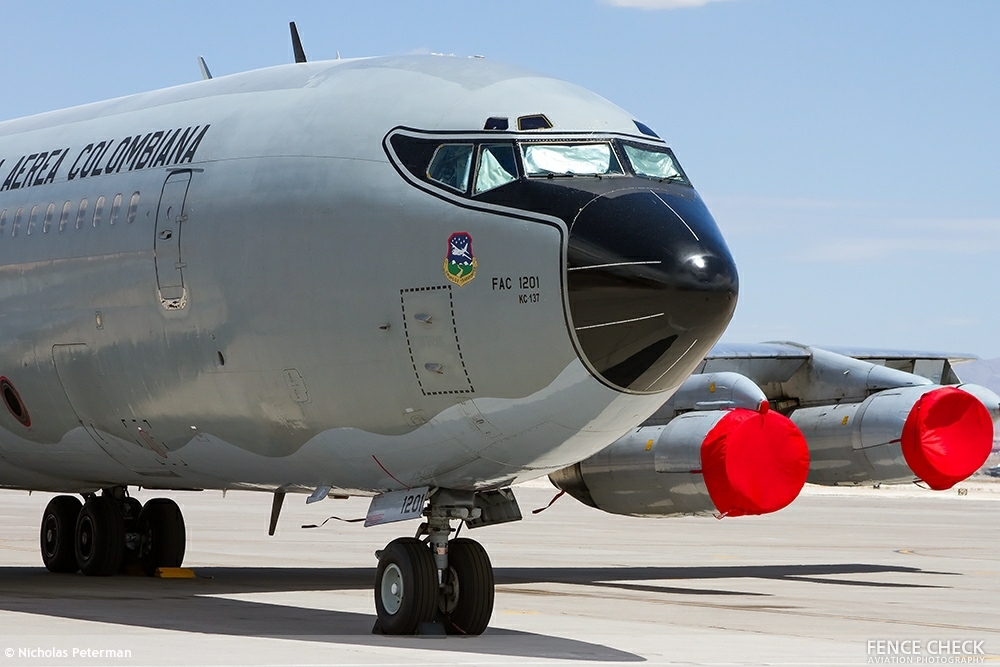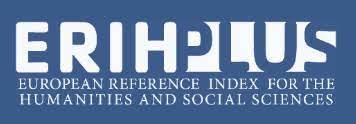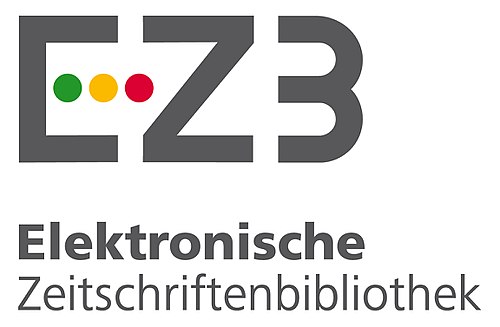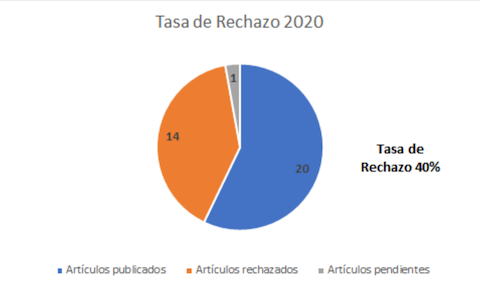Revisión de sistemas de control en red como base para sistemas satelitales de pequeña escala
DOI:
https://doi.org/10.18667/cienciaypoderaereo.604Palabras clave:
sistemas multiagente, arquitecturas satelitales, constelaciones, control en redResumen
el presente artículo parte de la premisa complementaria entre sistemas satelitales de gran escala y sistemas en red de pequeña escala que puedan suplir los mismos servicios, por lo tanto, se presentan diferentes enfoques de trabajos desarrollados en torno a los aportes de sis- temas de control en red, como fundamento al desarrollo de nuevas tecnologías en la operación de sistemas satelitales y de servicios aeroespaciales, los cuales se han convertido en un desafío permanente para diferentes disciplinas y países en vía de desarrollo alrededor del mundo. En este sentido, se realizó una revisión descriptiva organizada mediante tópicos y descriptores para la búsqueda de factores de diseño en relación con los sistemas de operación y control que han sido fuente de trabajo, tanto para la con guración de constelaciones como de clúster satelitales; logrando con esto identi car las tendencias y aportes que en materia de sistemas multiagente se han desarrollado, así como las pautas necesarias para la formulación de soluciones a las necesidades de coordinación de sistemas de bajo costo, que sean capaces de brindar alternativas sostenibles para países como Colombia frente a la democratización del espacio. Con esta revisión se obtienen como resultados diferentes lineamientos para la definición de requerimientos, la descripción de arquitecturas y modelos de referencia, así como algunos factores de uso en tecnologías comparadas, que en términos prácticos brindan las herramientas para la generación de alternativas de diseño de misión en aplicaciones de seguridad crítica y defensa, que pueden ser extendidas en enfoques de sistemas satelitales multiagente.
Descargas
Referencias
Abbott, M. (2000). The Role of Small Satellites in NASA and NOAA Earth Observation Programs, 41-50. https://doi.org/10.17226/9819
Agogino, A., HolmesParker, C. & Tuner, K. (2012). Evolving distributed resource sharing for cubesat constellations. GECCO’12 - Proceedings of the 14th International Conference on Genetic and Evolutionary Computation, 1015–1022. https://doi.org/10.1145/2330163.2330305
Alvarez, J., & Walls, B. (2016). Constellations, Clusters , and Communication Technology: Expanding Small Satellite Access to Space.
Beard, R. W. (2002). Virtual structure based spacecraft formation control with formation feedback. AIAA Guidance, Navigation, and Control Conference and Exhibit, 1-8. Recuperado de https://pdfs.semanticscholar.org/3946/b500ad05a2d9f6c0a9519054e0b7c82e9f77.pdf
Bouwmeester, J., & Guo, J. (2010). Survey of worldwide pico- and nanosatellite missions, distributions and subsystem technology. Acta Astronautica, 67(7–8), 854–862. https://doi.org/10.1016/j.actaastro.2010.06.004
Braukhane, A., Arza, M., Bacher, M., Calaprice, M., Fiedler, H., Koehne, V., … Rivera, J. J. (2010). FormSat, a scalable formation flying communication satellite system. IEEE Aerospace Conference Proceedings, (1). https://doi.org/10.1109/AERO.2010.5446999
Brockett, R. W. (2008). Reduced Complexity Control Systems ?? IFAC Proceedings Volumes (Vol. 41). IFAC. https://doi.org/10.3182/20080706-5-KR-1001.00001
Cao, L., & Chen, X. (2016). Minimum sliding mode error feedback control for inner-formation satellite system with J 2 and small eccentricity, 59(July), 1–18. https://doi.org/10.1007/s11432-016-5573-1
Cao, L., Chen, X., & Sheng, T. (2013). Fault tolerant small satellite attitude control using adaptive non-singular terminal sliding mode. Advances in Space Research, 51(12), 2374–2393. https://doi.org/10.1016/j.asr.2013.02.004
Cao, Y. U., Fukunaga, A. S., Kahng, A. B., & Meng, F. (1997). Cooperative mobile robotics: antecedents and directions. Proceedings 1995 IEEE/RSJ International Conference on Intelligent Robots and Systems. Human Robot Interaction and Cooperative Robots, 1, 226–234. https://doi.org/10.1109/IROS.1995.525801
Castellanos, C. A. y Aparicio, L. E. (2014). Diseño y Simulación de un Sistema de Determinación de Actitud basado en el Filtro Extendido de Kalman para el Cubesat Colombia I. Rev. Fac. Ing. Univ. Antioquia, 70, 146-154
Chen, B., Linz, D. D., & Cheng, H. H. (2008). XML-based agent communication , migration and computation in mobile agent systems, 81, 1364–1376. https://doi.org/10.1016/j.jss.2007.10.026
Chen, Z., & Zeng, Y. (2013). A Swarm Intelligence Networking Framework for Small Satellite Systems. Communications and Network, 5(September), 171–175.
Cruz, D., Mcclintock, J., Perteet, B., Orqueda, O. A. A., Cao, Y., & Fierro, R. (2007). Decentralized cooperative control. IEEE Control Systems Magazine, (June), 58–78.
De Arboleya, J. L. G., & Moreno, J. S. (2012). Multiagent attitude control system for satellites based in momentum wheels and event-driven synchronization. Journal of the Astronautical Sciences, 59(4), 726–746. https://doi.org/10.1007/s40295-014-0010-4
De Freitas, N. C. A., Filho, P. P. R., De Moura, C. D. G., & Silva, M. P. S. (2016). AgentGeo: Multi-Agent System of Satellite Images Mining. IEEE Latin America Transactions, 14(3), 1343–1351. https://doi.org/10.1109/TLA.2016.7459619
Dhios, R. A. (2013). Paradigma de “ Agentes de Software ” aplicado al desarrollo de satélites amateurs ., 1–5. VII Congreso Argentino de Tecnología Espacial. Mayo 15-17, 2013. Mendoza, Argentina.
Díaz González, F. A., Quintero Torres, S. V., Triana Correa, J. S. & Morón Hernández. D. C. (2014). Aproximación a los sistemas de percepción remota en satélites pequeños.
Dorigo, M., Birattari, M., & Stutzle, T. (2006). Ant colony optimization. IEEE Computational Intelligence Magazine, 1(4), 28–39. https://doi.org/10.1109/MCI.2006.329691
Edlerman, E., & Kronhaus, I. (2016). Analysis of electric propulsion capabilities in establishment and. March 2016, Conference: 6th International Conference on Astrodynamics Tools and Techniques, https://www.researchgate.net/publication/304800017_
Engelen, S. (2016). Swarm Satellites: Design, Characteristics and Applications. TU Delft University (Vol. 91). Doi: 10.4233/ uuid:a5dbc5f7-039b-431b-8f32-d3394e690348, https://repository.tudelft.nl/islandora/object/uuid:a5dbc5f7-039b-431b-8f32-d3394e690348?collection=research
Forero, D. R., & Libertadores, F. U. L. (2015). aerodinámica de un globo sonda recuperable y reutilizable 1.
Gill, E., Sundaramoorthy, P., Bouwmeester, J., Zandbergen, B., & Reinhard, R. (2013). Acta Astronautica Formation flying within a constellation of nano-satellites : The QB50 mission. Acta Astronautica, 82(1), 110–117. https://doi.org/10.1016/j.actaastro.2012.04.029
Guerman, A., Ovchinnikov, M., Smirnov, G., & Trofimov, S. (2012). Closed Relative Trajectories for Formation Flying with Single- Input Control, 2012. https://doi.org/10.1155/2012/967248
Gurfil, P., Herscovitz, J., & Pariente, M. (2014). SSC12-VII-2 The SAMSON Project – Cluster Flight and Geolocation with Three Autonomous Nano-satellites.
Hawe, G. I., Coates, G., Wilson, D. T., & Crouch, R. S. (2012). Agent- Based Simulation for Large-Scale Emergency Response : A Survey of Usage and Implementation, 45(1). https://doi.org/10.1145/2379776.2379784
Huang, H., Yang, L., Zhu, Y., & Zhang, Y. (2014). Acta Astronautica Collective trajectory planning for satellite swarm using intersatellite electromagnetic force. Acta Astronautica, 104(1), 220–230. https://doi.org/10.1016/j.actaastro.2014.07.032
Jadbabaie, A., Lin, J., & Morse, A. S. (2003). Coordination of Groups of Mobile Autonomous Agents Using Nearest Neighbor Rules, 48(6), 988–1001.
Ji, M., Member, S., Egerstedt, M., & Member, S. (2007). Distributed Coordination Control of Multiagent Systems While Preserving Connectedness, 23(4), 693–703.
Julián, V., & Botti, V. (2003). Estudio de métodos de desarrollo de sistemas multiagente. Inteligencia Artificial. Revista Iberoamericana de Inteligencia Artificial, 7(18), 65-80. Recuperado de http://www.redalyc.org/articulo.oa?id=92501806
Kempton, L. C., Herrmann, G., & di Bernardo, M. (2017). Distributed optimisation and control of graph Laplacian eigenvalues for robust consensus via an adaptive multilayer strategy. International Journal of Robust and Nonlinear Control, 1–9. https://doi.org/10.1002/rnc.3808
Kempton, L., Herrmann, G., & di Bernardo, M. (2016). Distributed adaptive optimization and control of network structures. 2016 IEEE 55th Conference on Decision and Control (CDC), (Cdc), 5839–5844. https://doi.org/10.1109/CDC.2016.7799167
Kong, E. M. C., Kwon, D. W., Schweighart, S. A., Elias, L. M., Sedwick, R. J., Miller, D. W., & Case, T. (2004). Electromagnetic Formation Flight for Multisatellite Arrays, 41(4).
Kumar, V. (2017). Autonomous Formation Keeping of Geostationary Satellites with Regional Navigation Satellites and Dynamics. Journal of Guidance, Control, and Dynamics, 1–21. https://doi.org/10.2514/1.G001652
Kwak, J., Scerri, P., Tambe, M., Sert, O., & Freedy, A. (2011). Towards a Robust MultiAgent Autonomous Reasoning System (MA-ARS): An Initial Simulation Study for Satellite Defense. AIAA Infotech at Aerospace, (March), 1–17.
J.R.T. Lawton & B.J. Young. (1999). Decentralized approach to elementary formation maneuvers. http://www.et.byu.edu/~beard/papers/library/lawton-tra99.pdf
Lawton, J. R., & Beard, R. W. (2002). Synchronized multiple spacecraft rotations, 38, 1359–1364.
Lesser, V. R. (1995). Systems : An Emerging Subdiscipline of AI, 27(3).
Lesser, V. R. (1995). Systems : An Emerging Subdiscipline of AI, 27(3).
Lesser, V. R. (1999). Cooperative multiagent systems: a personal view of the state of the art. IEEE Transactions on Knowledge and Data Engineering, 11(1), 133–142. https://doi.org/10.1109/69.755622
Li, J., Pan, Y., & Kumar, K. D. (2010). Formation Flying Control of Small Satellites, (August), 1–25. https://doi.org/10.2514/6.2010-8296
Lowe, C. J., & Macdonald, M. (2014). Acta Astronautica Rapid model-based inter-disciplinary design of a CubeSat mission. Acta Astronautica, 105(1), 321–332. https://doi.org/10.1016/j.actaastro.2014.10.002
Ma, Y., Jiang, W., Sang, N., & Zhang, X. (2012). ARCSM: A distributed feedback control mechanism for security-critical real-time system. Proceedings of the 2012 10th IEEE International Symposium on Parallel and Distributed Processing with Applications, ISPA 2012, (2), 379–386. https://doi.org/10.1109/ISPA.2012.56
Martin, M., Klupar, P., Kilberg, S. & Winter, J. (1997). TechSat 21 and revolutionizing space missions using microsatellites. American Institute of Aeronautics and Astronautics. 1–10. https://digitalcommons.usu.edu/smallsat/2001/All2001/3/
Martinez, R. (2015). Diseño de un controlador para la formación de grupos de robots móviles, Conference: XVI Congreso Latinoamericano de Control Automático, CLCA At: Cancún, Quintana Roo, México, https://www.researchgate.net/publication/280946697.
Mazal, L., & Gurfil, P. (2014). Acta Astronautica Closed-loop distance- keeping for long-term satellite cluster flight. Acta Astronautica, 94(1), 73–82. https://doi.org/10.1016/j.actaastro.2013.08.002
Mclainl, T. W., Chandler, P. R., Rasmussen, S., & Pachter, M. (2001). Cooperative Control of UAV Rendezvous.
Medina, C. (2017). Nanosatélites.
Mier-hicks, F., & Lozano, P. C. (2017). Spacecraft Charging and Attitude Control Characterization of Electrospray Thrusters on a Magnetically Levitated Testbed, (February).
Mo, Y., & Murray, R. M. (2017). Privacy Preserving Average Consensus, 62(2), 753–765.
Moradi, M. H., Razini, S., & Hosseinian, S. M. (2016). State of art of multiagent systems in power engineering : A review. Renewable and Sustainable Energy Reviews, 58, 814–824. https://doi.org/10.1016/j.rser.2015.12.339
Murray, R. M. (2007). Recent Research in Cooperative Control of Multivehicle Systems. Journal of Dynamic Systems, Measurement, and Control, 129, 571–583. https://doi.org/10.1115/1.2766721,
Nunes, M (2015). Satellite Constellation Optimization Method for Future Earth Observation Missions Using Small Satellites. Recuperado de https://www.researchgate.net/publication/272161831
Olfati-saber, B. R., Fax, J. A., & Murray, R. M. (2007). Consensus and Cooperation in Networked Multi-Agent Systems, 95(1), 215– 233.
Olfati-saber, R., & Murray, R. M. (2004). Consensus Problems in Networks of Agents With Switching Topology and Time-Delays, 49(9), 1520–1533.
Olfati-saber, R., & Shamma, J. S. (2005). Consensus Filters for Sensor Networks and, (0), 6698–6703.
Ortega, F. (2006). Sistemas Multiagente y Fútbol de robots : Estado del Arte, 1–7. Retrieved from http://citeseerx.ist.psu.edu/viewdoc/similar?doi=10.1.1.83.5889&type=cc
Padron, A. M., Nebylov, A. & Knyazhsky, A. (2017). Verification of the Precise Orbital Holding of Small Satellite Formation for Remote Control of Robots on a Planet Surface, 360–363.
Poghosyan, A., & Golkar, A. (2016). Progress in Aerospace Sciences CubeSat evolution : Analyzing CubeSat capabilities for conducting science missions. Progress in Aerospace Sciences, (September), 1–25. https://doi.org/10.1016/j.paerosci.2016.11.002
Poveda G, O. S. (2016). Integración de satélites en el desarrollo de operaciones militares aéreas en Colombia según su órbita.
Radhakrishnan, R., Edmonson, W. W., Afghah, F., Rodriguez-osorio, R. M., Pinto, F. & Burleigh, S. C. (2016). Survey of Inter-Satellite Communication for Small Satellite Systems: Physical Layer to Network Layer View.
Ren, W. (2006). Consensus Based Formation Control Strategies for Multi-vehicle Systems. American Control Conference Minneapolis, 4237–4242
Ren, W. & Beard, R. W. (2004). Decentralized Scheme for Spacecraft Formation Flying via the Virtual Structure Approach, 27(1), 73–82.
Ren, W., Beard, R. W., Atkins, E. M. & Theory, A. G. (2005). A Survey of Consensus Problems in Multi-agent Coordination, 1859–1864.
Ren, W., Chao, H., Member, S., Bourgeous, W. & Member, S. (2008). Experimental Validation of Consensus Algorithms for Multivehicle Cooperative Control, 16(4), 745–752.
Richard, M. (2009). Cooperative control of distributed autonomous systems with applications to wireless sensor networks.
Rouff, C. (2000). Process for Introducing Agent Technology into Space Missions. IEEE Aerospace Conference Proceedings, 2743–2750. DOI: 10.1109/AERO.2001.931295, Recuperado de: https://ieeexplore.ieee.org/document/931295/
Ryan, A., Zennaro, M., Howell, A., Sengupta, R. & Hedrick, J. K. (2004). An overview of emerging results in cooperative UAV control. Decision and Control, 2004. CDC. 43rd IEEE Conference On, 1, 602–607 Vol.1. https://doi.org/10.1109/CDC.2004.1428700
Saaj, C. M., Bandyopadhyay, S. & Bandyopadhyay, B. (2010). Robust Control And Path Planning Algorithms For Small Satellite Formation Flying Missions. IAC-09-B4., 1–7. Recuperado de https://pdfs.semanticscholar.org/6d71/290b5ffde8e9d326dbd6499ae9a7cbf709d4.pdf
Sadeghi, S. & Emami, M. R. (2017). ScienceDirect Multi-spacecraft studies of the auroral acceleration region : From cluster to nanosatellites. Advances in Space Research, 59(5), 1173–1188. Doi: https://doi.org/10.1016/j.asr.2016.11.037
Scharnagl, J., Scharnagl, J., Schilling, K., Schilling, K., Scharnagl, J. & Schilling, K. (2016). ScienceDirect Hardware-in-the- Loop Hardware-in-the-Loop Hardware-in-the-Loop Mobile Based on on Mobile Mobile Robot Platforms. IFAC-PapersOnLine, 49(30), 65–70. Doi: https://doi.org/10.1016/j.ifacol.2016.11.127
Schilling, K. (2017). Perspectives for miniaturized, distributed, networked cooperating systems for space exploration. Robotics and Autonomous Systems, 90, 118–124. Doi: https://doi.org/10.1016/j.robot.2016.10.007
Sedwick, R. J., Supervisor, T., Miller, D. W. & Velde, W. E. Vander. (2001). Development and Analysis of a High Fidelity Linearized J 2 Model for Satellite Formation Flying.
Shao, X., Song, M., Wang, J., Zhang, D. & Chen, J. (2017). Satellite formation keeping using differential lift and drag under J2 perturbation. Doi: https://doi.org/10.1108/AEAT-06-2015-0168
Sirigineedi, G., Tsourdos, A., White, B. A. & Zbikowski, R. (2011). Kripke modelling and verification of temporal specifications of a multiple UAV system, 31–52. Doi: https://doi.org/10.1007/s10472-011-9270-x
Skinnemoen, H. (2014). UAV & Satellite Communications. IEEE, Conference on Aerospace Electronics and Remote Sensing Technology (ICARES), 12–19.
Sorensen, T. (junio, 2014). Cooperative Control of Multiple Small Satellites using the Comprehensive Open-architecture Space Mission Operations System Cooperative Control Of Multiple Small Open-Architecture Space Mission Operations.
Sun, Y. (2012). Average consensus in networks of dynamic agents with uncertain topologies and time-varying delays. Journal of the Franklin Institute, 349(3), 1061–1073. Doi: https://doi.org/10.1016/j.jfranklin.2011.12.007
Sundararaman, B., Buy, U. & Kshemkalyani, A. D. (2005). Clock synchronization for wireless sensor networks : a survey, 3, 281– 323. Doi: https://doi.org/10.1016/j.adhoc.2005.01.002
Taylor, P., Wang, Q., Gao, H., Alsaadi, F. & Hayat, T. (octubre, 2014). Systems Science & Control Engineering : An Open An overview of consensus problems in constrained multi-agent coordination, 37–41. Doi: https://doi.org/10.1080/21642583.2014.897658
Truszkowski, W., Rash, J., Rouff, C. & Hinchey, M. (2004). Some autonomic properties of two legacy multi-agent systems - LOGOS and ACT. Proceedings - 11th IEEE International Conference and Workshop on the Engineering of Computer-Based Systems, ECBS 2004, 490–498. Doi: https://doi.org/10.1109/ECBS.2004.1316738
Tsarev, A. (2013). Smart Solutions: Multi-Agent Technology for Real- Time Enterprise Resource Management. IEEE/ACIS 12th International Conference on Computer and Information Science (ICIS), 1–6. Doi: 10.1109/ICIS.2013.6607827. Recuperado de https://ieeexplore.ieee.org/document/6607827/
Villaplana, E. (2008). Gormas: guías para el desarrollo de sistemas multiagente abiertos basados en organizaciones. Tesis Doctorado en informatica Universidad Politécnica de Valencia.
Wang, B., Wang, J., Zhang, B., S. & Li, X. (2016). Global Cooperative Control Framework for Multiagent Systems Subject to Actuator Saturation With Industrial Applications. IEEE Transactions on Systems, Man, and Cybernetics: Systems. 1–14. Doi: 10.1109/TSMC.2016.2573584
Wang, C., Li, J., Jing, N., Wang, J., & Chen, H. (2011). A distributed cooperative dynamic task planning algorithm for multiple satellites based on multi-agent hybrid learning. Chinese Journal of Aeronautics, 24(4), 493–505. Doi: https://doi.org/10.1016/S1000-9361(11)60057-5
Wang, P. (septiembre, 1996). Coordination and control of multiple microspacecraft moving in formation.
Wawrzaszek, R. & Banaszkiewicz, M. (2007). Control and reconfiguration of satellite formations by electromagnetic forces. Journal of Telecommunications and Information Technology. 1, 54-58. Recuperado de http://yadda.icm.edu.pl/baztech/element/bwmeta1.element.baztech-article-BAT8-0005-0012
Wei Ren, Randal W. Beard, & E. M. A. (abril, 2007). Information Consensus in Multivehicle Cooperative Control. IEEE Control Systems Magazine, 71–82.
Weidow, D., Bristow, J. & Weidow, D. A. (1999). NASA/DoD University Nano-Satellites for Distributed Spacecraft Control.
Xiang, C. A. O. & Daqi, Z. H. U. (julio, 2013). A Survey of cooperative hunting control algorithms for multi-AUV systems. Conferencia presentada en Proceedings of the 32nd Chinese Control Conference, 5791-5795. Recuperado de https://ieeexplore.ieee.org/document/6640452/
Xu, Y., Fitz-Coy, N., Lind, R. & Tatsch, A. (enero, 2007). μ Control for Satellites Formation Flying. Journal of Aerospace Engineering, 20(1). Doi: https://doi.org/10.1061/(ASCE)0893-1321(2007)20:1(10)
Yeh, H., Sparks, A. & Force, A. (junio, 2000). Geometry and Control of Satellite Formations. Conferencia presentada en Proceedings of the 2000 American Control Conference. ACC (IEEE Cat. No.00CH36334) Doi: 10.1109/ACC.2000.878926, 384–388. Recuperado de https://ieeexplore.ieee.org/document/878926/
Zampieri, S. (2008). Trends in Networked Control Systems. IFAC Proceedings Volumes (Vol. 41). IFAC. Doi: https://doi.org/10.3182/20080706-5-KR-1001.00486
Zenick, R. G. & Kohlhepp, K. (2001). GPS Micro Navigation and Communication System for Clusters of Micro and Nanosatellites. Conferencia presentada en 2001 IEEE Aerospace Conference Proceedings (Cat. No.01TH8542), doi: 10.1109/ AERO.2001.931212. Recuperado de https://ieeexplore.ieee.org/document/931212/
Zetocha, P., Self, L., Wainwright, R. & Burns, R., Brito, M. & Surka, D. (2000). Commanding and controlling satellite clusters. IEEE Intelligent Systems, 15(6), 8-13. doi:10.1109/5254.895850. Recuperado de https://www.computer.org/csdl/mags/ex/2000/06/x6008-abs.html
Zhang, H. & Gurfil, P. (2015). Acta Astronautica Satellite cluster flight using on-off cyclic control $. Acta Astronautica, 106, 1–12. Doi: https://doi.org/10.1016/j.actaastro.2014.10.004
Zhang, H. & Gurfil, P. (2016). Cooperative Control of Multiple Satellites via Consensus. Conferencia presentada en 2016 24th Mediterranean Conference on Control and Automation (MED), 1102–1107. Dio: 10.1109/MED.2016.7536011. Recuperado de https://ieeexplore.ieee.org/document/7536011/
Zhu, A. & Yang, S. X. (2010). A Survey on Intelligent Interaction and Cooperative Control of Multi-robot Systems. Conferencia presentada en IEEE ICCA 2010. 1812–1817. Doi: 10.1109/ ICCA.2010.5524132. Recuperado de https://ieeexplore.ieee.org/abstract/document/5524132/
Zhu, J., Yang, Q., Huang, W. & Lu, R. (2015). A formal model of satellite communication system network control protocol based on generalized stochastic Petri nets. 2015 IEEE International Conference on Computer and Communications (ICCC), 340– 346. Doi://doi.org/10.1109/CompComm.2015.7387593

Publicado
Número
Sección
Licencia
Declaración de cesión de los derechos de autor a la revista
Los autores ceden la Revista los derechos de explotación (reproducción, distribución, comunicación pública y transformación) para explotar y comercializar la obra, entera o en parte, en todos los formatos y modalidades de explotación presentes o futuros, en todos los idiomas, por todo el periodo de vida de la obra y por todo el mundo.
Todos los contenidos publicados en la revista científica Ciencia y Poder Aéreo están sujetos a la licencia reconocimiento 4.0 Internacional de Creative Commons, cuyo texto completo se puede consultar en http://creativecommons.org/licenses/by/4.0/
La licencia permite a cualquier usuario descargar, imprimir, extraer, archivar, distribuir y comunicar públicamente este artículo, siempre y cuando el crédito se dé a los autores de la obra: a los autores del texto y a Ciencia y Poder Aéreo, Revista Científica de la Escuela de Postgrados de la Fuerza Aérea Colombiana. Excepto cuando se indique lo contrario, el contenido en este sitio es licenciado bajo una licencia Creative Commons Atribución 4.0 internacional.
Para usos de los contenidos no previstos en estas normas de publicación es necesario contactar directamente con el director o editor de la revista a través del correo cienciaypoderaereo@epfac.edu.
La Escuela de Postgrados de la Fuerza Aérea Colombiana y esta publicación no son responsables de los conceptos emitidos en los artículos, ni de los metadatos aportados ni de las filiaciones que los autores declaren, ya que esta es responsabilidad plena de los autores.





















